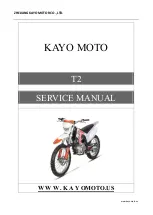
The number stamped on the wrench refers to the
distance between the work areas. This must match
the distance across two parallel flats on the bolt
head or nut.
The box-end wrench is an excellent tool because
it grips the fastener on all sides. This reduces the
chance of the tool slipping. The box-end wrench is
designed with either a 6- or 12-point opening. For
stubborn or damaged fasteners, the 6-point provides
superior holding ability by contacting the fastener
across a wider area at all six edges. For general use,
the 12-point works well. It allows the wrench to be
removed and reinstalled without moving the handle
over such a wide arc.
An open-end wrench is fast and works best in ar-
eas with limited overhead access. Because it con-
tacts the fastener at only two points, an open-end
wrench is subject to slipping under heavy force or if
the tool or fastener is worn. A box-end wrench is
preferred in most instances, especially when apply-
ing considerable force to a fastener.
The combination wrench has a box-end on one
end and an open-end on the other. This combination
makes it a very convenient tool.
Adjustable Wrenches
An adjustable wrench or Crescent wrench (
Fig-
ure 13
) fits nearly any nut or bolt head that has clear
access around its entire perimeter. An adjustable
wrench is best used as a backup wrench to hold a
large nut or bolt while the other end is being loos-
ened or tightened with a box-end or socket wrench.
Adjustable wrenches contact the fastener at only
two points, which makes them more subject to slip-
ping off the fastener. The fact that one jaw is adjust-
able and
may loosen
only aggravates
this
shortcoming. Make certain the solid jaw is the one
transmitting the force.
Socket Wrenches, Ratchets and Handles
Sockets that attach to a ratchet handle (
Figure
14
) are available with 6-point (A,
Figure 15
) or
12-point (B) openings and different drive sizes. The
drive size indicates the size of the square hole that
accepts the ratchet handle. The number stamped on
the socket is the size of the work area and must
match the fastener head.
As with wrenches, a 6-point socket provides su-
perior-holding ability, while a 12-point socket
needs to be moved only half as far to reposition it on
the fastener.
Sockets are designated for use with either hand.
Impact sockets are made of thicker material for
more durability. Compare the size and wall thick-
ness of a 19-mm hand socket (A,
Figure 16
) and the
19-mm impact socket (B). Use impact sockets when
using an impact driver or air tools. Use hand sockets
with hand-driven attachments.
10
CHAPTER ONE
13
14
15










































